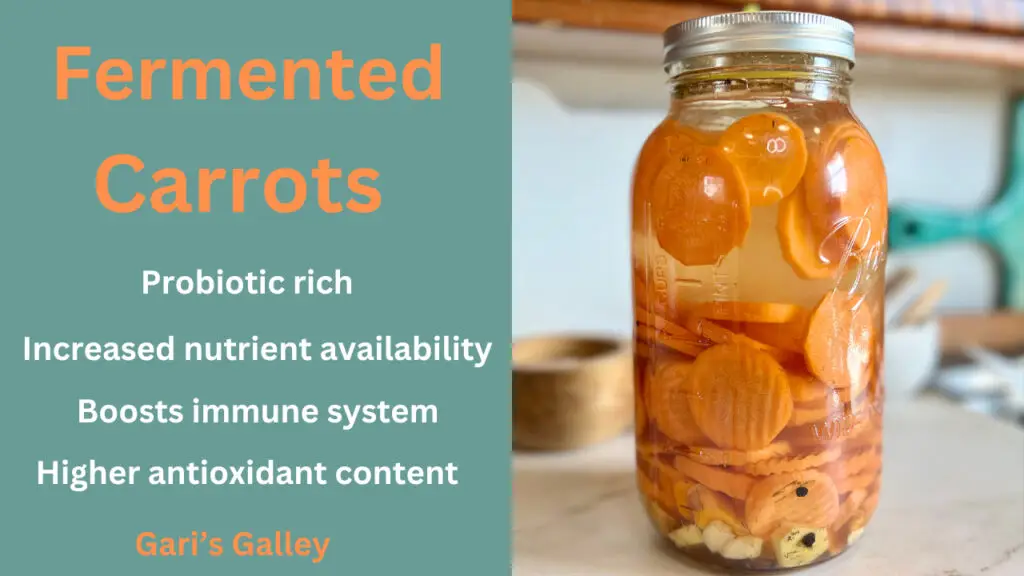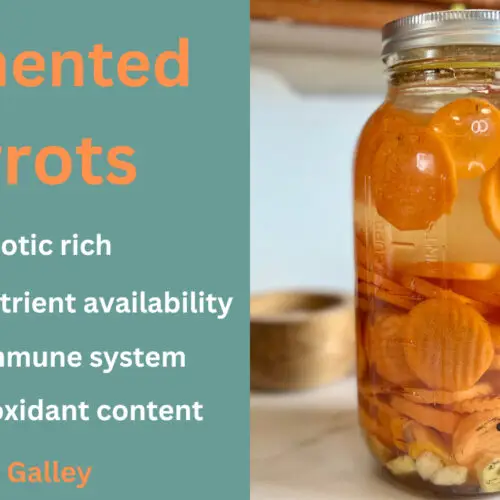When we think of carrots, we may picture them as a simple, crunchy vegetable commonly used as a side dish or in salads. However, there is so much more to this humble root vegetable. Have you ever heard of fermented carrots? If not, you’re missing out on a delicious and nutrient-dense treat.
Fermentation is a process that has been used for centuries to preserve food. It involves adding bacteria, yeast, or fungi to a food source and allowing it to sit and ferment. This process not only preserves the food but also enhances its nutritional value. Fermented foods are packed with probiotics, beneficial bacteria that improve gut health and overall well-being.
One popular fermented food is sauerkraut, made from cabbage. But did you know that you can also ferment carrots? The process is simple and yields a tasty and nutritious product.
So, what are the benefits of fermented carrots, you may ask? Firstly, they are great for digestion. The probiotics in fermented carrots help balance the good bacteria in our gut, which can improve digestion and reduce digestive issues like bloating and gas.
Fermentation also breaks down the tough cell walls of carrots, making their nutrients more easily absorbed by our bodies. This means that fermented carrots have a higher concentration of vitamins A, C, and K, as well as minerals like calcium, magnesium, and potassium.
The probiotics found in fermented carrots also play a crucial role in boosting our immune system. They can help our bodies fight off infections and reduce inflammation, which is linked to many chronic diseases.
Aside from their health benefits, fermented carrots also have an improved flavor and texture. The fermentation process gives them a tangy and slightly sour taste that adds depth to dishes like salads, sandwiches, soups, and stews. They can also be used in dressings, marinades, and dips.
Plus, fermented carrots have a longer shelf life compared to fresh carrots. They can last for months in the refrigerator, making them a convenient and cost-effective option for long-term storage.
But don’t just take my word for it, why not try making your own fermented carrots at home? All you need are carrots, salt, and water. Simply chop or grate the carrots, mix them with salt and water, and let them sit in a jar for a few days. You can add other seasonings or spices like garlic, ginger, or dill for added flavor. And voila, you have a jar of delicious and healthy fermented carrots ready to be enjoyed.
Fermented Carrots
Equipment
- Fermentation weights Or something to hold the carrots under the Brine.
- Pickle pipes You can also use a piece of cloth or a coffee filter and a rubber band
- 1 Quart wide mouth mason jar
Ingredients
- Organic carrot Sticks or slices, enough to fill the jar. Washed and peeled. Organic is important so you know no pesticides have been sprayed on them. I think one pound normally does a quart jar.
- Sea Salt 1 Tbsp per one cup of water
- Filtered water No chlorinated water
Optional Add Inns
- 1 inch Fresh ginger diced
- 1 inch Fresh Turmeric diced
- 4 Whole peppercorns smashed
- 2-3 Cloves garlic smashed
- 1 Tbsp Dried dill
- A few sprigs of fresh dill
- 1 teaspoon of mustard seed and 1 teaspoon of caraway.
- 1 jalapeno pepper sliced in half along with a few slices of onion
Instructions
- Fill a measuring cup with 2 cups of filtered water and whisk in the sea salt.
- Add flavors that you choose to the jar first to keep them from floating. Then pack in carrots, making sure that the carrots are 1 inch below the top. Try to pack the carrots in tightly, then use a fermentation weight to keep them from floating above the brine. it is important that whatever weight you are using, the weights and all the carrots are below the brine level.
- Be sure to leave a bit of head room for bubbling. Be sure to use a jar that will allow gas to escape during the ferment.
- Add a fermenting lid or pickle pipe to the top, and then screw with a Mason jar band. Of a scrap of fabric and a rubber band.
- Place the carrots in a dark, room-temperature location (a kitchen cupboard is perfect). Let them ferment for a minimum of 14 days up to 28 days. After 14 days, the carrots will be deliciously fermented but still crisp. They will continue to soften the longer they ferment.
- Set the jar on a towel or plate to catch any possible brine overflow that will occur during the first week of fermentation
- White bubbles or foam on the top is totally normal! That's a sign of a healthy ferment.
- When you decide to end the fermentation period (a minimum of 14 days up to 28 days) is based on your taste preference. The longer the carrots ferment, the more their flavors will develop and their texture will slightly soften (yet still be crunchy). Open the jar and take a look. Most likely you’ll see a layer of kahm yeast on top. This is okay. With clean hands, reach in through the kahm yeast and remove the fermenting weight. Use a paper towel as a gripper if the weight is too slick. Remove any remaining kahm yeast. The good news is that the fermenting weight will take the bulk of the kahm yeast out with it. Next, use a paper towel to wipe off the remaining kahm yeast from the inside of the jar. You can also dab the surface with a paper towel (or use a spoon) to pick up the remaining kahm yeast flakes. Remember that kahm yeast is harmless so if some pieces remain, it’s ok!
- Replace the fermentation lid with a plastic wide mouth plastic mason jar lid and store in the refrigerator. They will last for many months.


